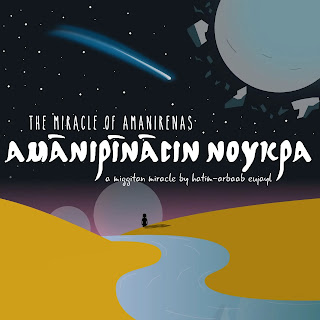At the beginning of the 20th century, the German coptologist Karl
Schmidt bought two manuscripts from an antiquarian in Cairo, believing they
contained Coptic texts from Upper Egypt. Upon closer inspection, however,
Schmidt realized that, in reality, it was another, peculiar, language. And
after deciphering two key words, which referred to King Herod, he was able to
confirm that in his hands he had a text written in a Nubian form, a success
that many consider today the rediscovery of the language.
Known as Old Nubian, it is one of the two vernacular languages of the land of the
Nubians, an indigenous people of the region that currently encompasses northern
Sudan and southern Egypt. The language appeared around the 8th century, which
makes it a written language older than Spanish and one of the oldest in Africa,
but it was stopped writing towards the end of the 15th because of the
disintegration of the kingdom that had it. as an official language and the
substitution of Christianity for Islam, explains Vincent WJ Van Gerven Oei, an
ancient Nubian philologist and expert. Since then, Nubian has remained –
permanently threatened – as an oral language, and its speakers have had to turn
to the Arabic or Latin alphabets to write it. Many still believe that it has
always been this way.
It was in the wake of the rediscovery of Old Nubian, and especially when knowledge of the language began to spread more widely among Nubian communities in the 1990s, that some influential isolated initiatives by activists to revive it emerged, laying the foundations for modern nubian spelling.
Fragment of an
ancient Nubian manuscript from the 9th or 10th century, from Qasr Ibrahim
(Egypt) and which currently rests in the British Museum.
Now three young Sudanese of Nubian descent, in collaboration with
an independent London publisher, Taras Press, are trying to give a new impetus
to those initial efforts to revive the Nubian alphabet with the publication of
one of the first children’s books in Nubian written in their alphabet. To
achieve this, one of them, Hatim Eujayl, has developed what is believed to be
the first Nubian digital typeface, and they are trying to reach a consensus
with key community figures on how to encode the spelling. A not simple company
after 500 years in white. “The reason so many Nubians want to write in Nubian
script is that it is a way of reclaiming their identity and history,” Eujayl
slides.
“Eujayl’s effort is enormously significant. The existing Nubian typefaces are all based on Coptic script, ”notes Van Gerven Oei. Eujayl’s typeface is the first based on the form that we find in medieval manuscripts. It is also the first produced by someone of Nubian origin. And it’s a nice typeface, ”he adds.
“What we want to do is bring key players together and say that we
are trying to get books on paper, so let’s agree, for the sake of the next
generation, so they can really learn,” Mitchell emphasizes. “Because if everyone tells you different ways to write, it’s going to be
confusing.”
https://penaltinews.com/rewrite-in-nubian-500-years-later-culture/



No hay comentarios:
Publicar un comentario